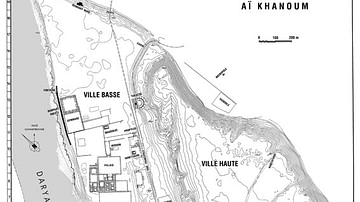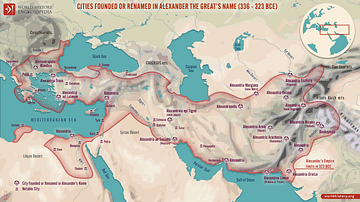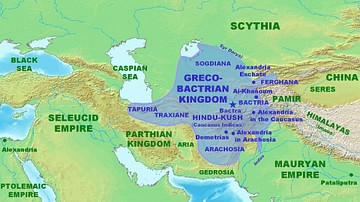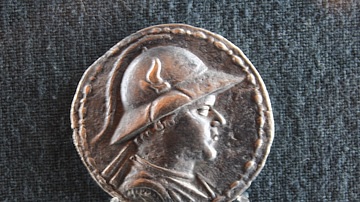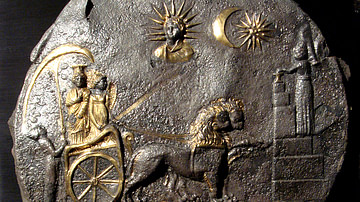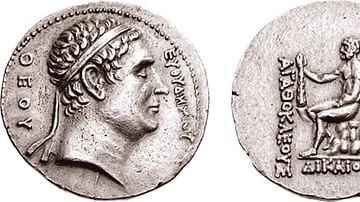
The Greco-Bactrian kingdom refers to several dynasties and probably kingdoms of Greco-Macedonian monarchs who ruled over Bactria from 250 to 130 BCE.
Foundation
The Greco-Bactrian kingdom appeared in 250 BCE, when the satrap Diodotos (or Theodotus in Latin) rebelled against his Seleucid ruler, Antiochos II, knowing that Antiochus was occupied struggling against the Ptolemies in the west. At first Diodotos and his son Diodotos II conquered many territories southward in Ariana, restricting their conquests to Bactria. However around 230 BCE, a local ruler named Euthydemos, maybe linked to the Seleucids, overthrew the Diodotids and created his own dynasty, extending his territory northward into Sogdiana and Ferghana. In 210 BCE, the Seleucid Antiochos III fought victoriously against Euthydemos, forcing him to retreat, which led to a three-year siege of Bactra. This endless siege and the threat of the northern nomads forced Antiochos III to negotiate: He recognized Euthydemos as king and gave him one of his daughters in exchange of supplies and war elephants.
Expansion
Having the west front secured, the Greco-Bactrian kings waged war against their eastward neighbors, taking advantage of the decline of the Mauryan dynasty. In less than 20 years, under Demetrios and his descendants, they took the Paropamisadaes, Arachosia, Gandhara and Western Punjab. At the same time the central power was divided between several kings which seemed not be always in good terms. Some of them ruled only eastward of the Hindukush, being the first Indo-Greek kings.
Eucratides Takes Power
In 171 BCE Eucratides, who may also have been linked to the Seleucids, overthrew the Greco-Bactrian king and waged war against the Indo-Greek kings. He was successful at first until an Euthydemid called Menander forced him to retreat west of the Hindu-Kush in Bactria. This marked the beginning of the rivalry between the Euthydemid and the Eucratid dynasties, which lasted for a long time. This rivalry weakened the Greco-Bactrian kingdom: Sogdiana was soon lost, and Eucratides was forced to abandon western Bactria to Parthian kings. In 145 BCE, Eucratides was murdered by his own son, which led a period of politic instability resulting in the overthrow of the last Indo-Greek king, Heliokles, in 130 BCE by the Yuezhei nomads.
Contact with Other Cultures
The Greco-Bactrian kingdom had a unique place in the Greek imagination, being a Hellenistic kingdom at the border of the known world. This kingdom had frequent contacts with Indian and nomad neighbors, and possibly also the Chinese, which is evident in the spread of their goods and coins. The Greco-Bactrian art was known to be one of the finest at this time, as the statues found at Ostobora (modern Aï Khanoum) and Bactra attest, and their coins were of particularly high quality. This originality was not lost with the fall of the last Greco-Bactrian king, because some continuations of Greco-Bactrian art is evident in their Yuezhei and Koushan successors.



